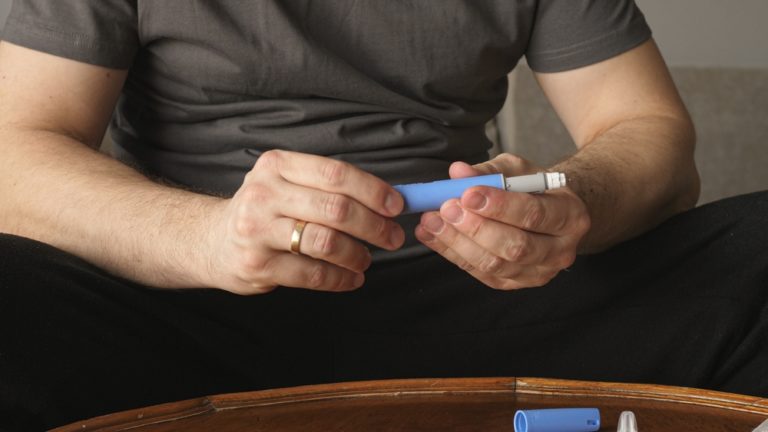Gravol is a well-known over-the-counter medication. It is primarily used to treat nausea and motion sickness. Many people rely on Gravol for its effectiveness. It is available in various forms, including tablets and liquid.
Gravol’s active ingredient, dimenhydrinate, helps alleviate symptoms quickly. It is also used for vertigo and dizziness relief.
Gravol Ginger offers a natural alternative for those seeking herbal remedies. Ginger is known for its soothing properties.
Understanding Gravol’s uses and side effects is crucial. It ensures safe and effective treatment for nausea. This guide will explore Gravol’s benefits and potential risks. Learn how to use it safely and effectively. Discover if Gravol is the right choice for your needs. Make informed decisions about your health and wellness.
What Is Gravol?
Gravol is a popular medication for nausea and motion sickness. It is widely available over the counter.
The main component in Gravol is dimenhydrinate. This compound effectively manages travel-induced sickness and other causes of nausea.
Gravol comes in various forms to suit different needs. You can find it as tablets, liquid, chewables, and even suppositories.
Key Features of Gravol
- Active Ingredient: Dimenhydrinate
- Forms: Tablets, liquids, chewables, and suppositories
- Use: Over-the-counter treatment for nausea and motion sickness
Gravol is trusted by many for its quick relief. It works by blocking certain signals in the brain that trigger nausea.
Knowing what Gravol is and how it works can aid in selecting the right product. It’s important to follow usage guidelines to ensure safety.
How Does Gravol Work?
Gravol works by addressing the signals in the brain that lead to nausea. The active ingredient, dimenhydrinate, plays a crucial role.
Dimenhydrinate helps by blocking certain neurotransmitter receptors. These receptors are involved in creating sensations of dizziness and queasiness.
Key Mechanisms
- Blocks Signals: Interferes with nausea and vomiting pathways.
- Sedative Effects: Induces mild drowsiness to calm symptoms.
- Motion Control: Helps stabilize senses affected by movement.
The sedative effect of Gravol can also aid in relaxation. This can be particularly useful if nausea is accompanied by anxiety.
By interrupting these processes, Gravol effectively reduces symptoms. As a result, it offers fast and reliable relief from discomfort caused by nausea and motion sickness.
Common Uses of Gravol
Gravol is primarily used to manage nausea and motion sickness. These are some of the most frequent afflictions where Gravol can help.
Besides nausea and motion sickness, Gravol is helpful in treating vertigo and dizziness. It is also commonly utilized as part of a treatment plan for various forms of nausea-related issues.
Main Uses
- Nausea and Motion Sickness: Offers quick relief.
- Vertigo: Helps balance and equilibrium.
- Dizziness: Reduces feelings of imbalance.
Many people rely on Gravol for travel-related nausea. It’s particularly effective for road trips and sea voyages, thanks to its reliable action.
Gravol’s ability to address multiple conditions makes it a versatile choice. With various forms available, such as tablets and liquids, it’s easy to incorporate into daily life. Always remember to follow the dosage instructions to maximize effectiveness.
Gravol for Nausea and Motion Sickness
Gravol’s effectiveness against nausea, especially from motion sickness, is well-documented. It’s often the first choice for individuals facing travel-induced queasiness.
Key Benefits
- Fast-acting Relief: Usually takes effect within 30 minutes.
- Versatile Forms: Available in tablets, liquid, and more.
- Ease of Use: Can be taken before travel.
For those prone to travel sickness, Gravol acts as a preventive measure. Taking it ahead of time ensures symptoms are minimized or even prevented.
People often choose Gravol for its reputation. It helps immensely, providing comfort during journeys that might otherwise be miserable. This makes it a preferred option for many frequent travelers.
Can Gravol Help Diarrhea?
Gravol is not a direct treatment for diarrhea. However, it can help alleviate nausea that sometimes accompanies diarrhea.
Supportive Role
- Nausea Relief: Eases queasy feelings associated with diarrhea.
- Not a Cure: Doesn’t address the root cause of diarrhea.
- Complementary Use: Works alongside other treatments.
While it might not stop diarrhea, Gravol can provide significant comfort. Its main role is to reduce the nausea that can accompany gastrointestinal issues.
It’s essential to consult a healthcare professional for persistent diarrhea. Gravol should be used as part of a broader treatment approach when combating such conditions. Always ensure that the primary cause of the issue is addressed separately.
Types and Forms of Gravol
Gravol is available in several forms to suit various preferences and needs. This diversity ensures users can select the most convenient option for their situation.
Different forms include tablets, liquid formulations, and suppositories. Tablets are the most popular and accessible. Liquid forms are beneficial for those who struggle with swallowing pills.
Available Forms
- Tablets: Easy to carry and dose.
- Liquid: Suitable for children or those with swallowing difficulties.
- Suppositories: Alternative for severe nausea or vomiting.
This variety allows Gravol to cater to different user needs, enhancing its practicality for travel or home use. The ease of usage and quick action make these options appealing.
Each form offers unique benefits. It’s wise to choose based on personal need and the advice of a healthcare professional.
Gravol Ginger: A Natural Alternative
Gravol Ginger offers a natural option for nausea treatment. It uses ginger, known for its soothing properties and long-standing use in traditional medicine.
This variant is preferred by those seeking herbal remedies. It provides the benefits of ginger in a convenient package, appealing to those wary of traditional medications.
Key Features
- Ginger-Based: Relies on natural anti-nausea properties.
- Gentle on Stomach: Less likely to cause upset.
- Herbal Remedy: Suitable for those who prefer natural treatments.
Gravol Ginger does not compromise on effectiveness. It offers relief with fewer side effects, making it an attractive option for many. This version meets the needs of individuals looking for plant-based interventions.
How to Take Gravol Safely
Taking Gravol safely ensures you get the most benefit while minimizing risks. Always start by reading the product label thoroughly.
Following the recommended dosage is crucial. Overuse can lead to unwanted side effects or even dependency. It’s advised to adhere closely to dosage instructions.
Safe Usage Guidelines
- Check Label: Always read instructions carefully.
- Dosage: Follow recommended doses on the package.
- Monitoring: Keep track of any unusual reactions.
Use caution if combining Gravol with other medications. Interactions might alter its effectiveness. Consulting a healthcare provider can provide additional safety insights.
Lastly, refrain from mixing Gravol with alcohol. Alcohol can intensify drowsiness and other side effects, which compromises safety.
Can You Take Gravol on an Empty Stomach?
Gravol can generally be taken on an empty stomach. However, some people may experience mild stomach upset.
Considerations
- Stomach Sensitivity: May cause upset in some individuals.
- Food Option: Taking with food might alleviate discomfort.
Assess your tolerance before deciding. If discomfort occurs, trying it with a light snack might help.
Dosage and Timing: How Long Does Gravol Take to Kick In? How Long Does Gravol Last?
Understanding Gravol’s timing helps maximize its efficacy. Typically, Gravol begins working within 30 minutes.
Key Timing Facts
- Onset: Effects start within 30 minutes.
- Duration: Relief lasts 4 to 6 hours.
Planning is crucial for optimal results. Take it before experiencing nausea if possible. This proactive approach can prevent symptoms.
Adjust timing based on personal circumstances. Consider events like traveling to predict motion sickness, ensuring timing aligns perfectly for relief.
Side Effects and Safety Precautions
Gravol is generally safe when used as directed, but it can cause side effects in some individuals. It’s important to be aware of these potential reactions to ensure your safety.
Common side effects include drowsiness, dry mouth, and dizziness. These effects are usually mild but can affect daily activities.
Common Side Effects of Gravol
- Drowsiness
- Dry Mouth
- Dizziness
Uncommon side effects might include allergic reactions, such as rashes or itching. If severe symptoms occur, seek medical attention promptly.
Uncommon Side Effects
- Rashes
- Itching
- Severe Drowsiness
To minimize risks, adhere to dosage recommendations and avoid combining Gravol with alcohol, which can intensify side effects. Be mindful of driving or operating machinery until you know how Gravol affects you. Consulting a healthcare provider is a wise step if you have pre-existing conditions that might interact with Gravol.
Does Gravol Make You Sleepy?
Yes, Gravol can cause drowsiness due to its sedative properties, which might affect alertness.
Drowsiness Precautions
- Monitor Alertness: Avoid activities requiring focus.
- Caution with Alcohol: Increases sleepiness.
- Assess Personal Reaction: Effects vary per individual.
If you need to remain alert, consider scheduling your intake accordingly. Those needing quick relief but also needing to stay awake should consult with a healthcare professional for alternatives.
Who Should Avoid Gravol?
Not everyone should use Gravol. Individuals with specific health conditions may need to avoid it.
Conditions for Caution
- Glaucoma: Risk of increased eye pressure.
- Enlarged Prostate: May worsen symptoms.
- Severe Liver/Kidney Disease: Adjustments needed.
Pregnant or breastfeeding individuals should consult a healthcare provider before using Gravol. Individuals with a history of substance abuse should also be cautious due to potential dependency risks. Children under two years should not use Gravol without medical advice. Always consult a healthcare professional to determine if Gravol is suitable for your situation.
Interactions and Warnings
Gravol can interact with other medications, altering their effects. It’s essential to discuss all your medications with a healthcare provider to avoid adverse reactions.
Potential Interactions
- Sedatives: Increased drowsiness.
- Antihistamines: Enhanced effects.
- Alcohol: Intensified side effects.
Certain health conditions may increase the risk of adverse effects when using Gravol. Individuals with a history of respiratory issues should exercise caution.
Combining Gravol with other sedatives can lead to excessive sedation. Avoid using Gravol with alcohol, as this combination might increase drowsiness and impair cognitive functions. Always consult your healthcare provider before making changes to your medication regimen, especially if you have underlying medical issues or take multiple medications.
Storage and Handling of Gravol
Store Gravol in a cool, dry place away from direct sunlight. This helps maintain its potency and effectiveness.
Keep Gravol out of reach of children to prevent accidental ingestion. Always check expiration dates before use.
Key Storage Tips
- Avoid humid areas.
- Keep the container tightly closed.
- Store at room temperature.
Frequently Asked Questions About Gravol
Gravol is a trusted name in nausea treatment, but questions often arise. Below are some common inquiries.
How Soon Can You Feel Gravol Working?
Typically, Gravol starts to work within 30 minutes. Its effects can provide relief for 4 to 6 hours.
Can Gravol Be Taken With Food?
While Gravol can be taken on an empty stomach, some may find it easier on the stomach with food.
Does Gravol Interact With Alcohol?
Yes, Gravol can enhance alcohol’s sedative effects. It’s best to avoid alcohol when using Gravol.
Is Gravol Ginger Effective?
Gravol Ginger uses natural ginger to ease nausea. Many prefer it for its gentler approach.
List of Common Concerns
- Effectiveness on an empty stomach
- Interactions with other medications
- Concerns about long-term use
These insights provide a better understanding of Gravol’s applications and safety.
When to See a Doctor
Gravol is effective for mild to moderate nausea, but sometimes professional advice is needed. Seek medical attention in specific situations.
If nausea persists for more than two days, consult a healthcare provider. Persistent symptoms could indicate a more serious condition.
Reasons to Consult a Doctor
- Experiencing severe side effects
- Vomiting blood or dark material
- Unexplained weight loss or dehydration
These signs may require immediate medical evaluation to ensure proper treatment. Always prioritize your health when dealing with unexpected reactions.
Conclusion: Is Gravol Right for You?
Gravol is a trusted option for managing nausea and motion sickness. It offers both traditional and natural alternatives like Gravol Ginger.
However, individual needs vary, so it’s important to consider your health conditions. Consult with a healthcare professional if unsure. Always follow the recommended guidelines for safe use. Making an informed choice ensures the best outcome for your health and comfort.
Speak with an Online Doctor
Please note:
Walk In does not provide medical advice. The contents of this website, including text, graphics, images and any other material are intended for informational and educational purposes only and are not intended to substitute for professional medical advice, diagnosis or treatment. Although efforts are taken to keep any medical information on the website updated, we cannot guarantee that the information on our website is correct or reflects the most up-to-date medical information.
Please consult your physician for medical advice. Always seek the advice of a physician or other qualified healthcare provider with any questions regarding a medical condition. Never disregard or delay seeking professional medical advice or treatment because of something you have read on this website or on the internet.


